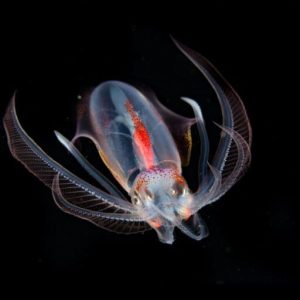The mesopelagic zone is the chilly, dimly lit layer of ocean found 200-1,000 meters (660-3,300 feet) below the surface, which scientists say plays key roles in the marine food web and carbon cycle. On Oct. 15, delegates to the IUCN World Conservation Congress in Abu Dhabi adopted a motion to protect it. The motion calls for any activities that could harm the mesopelagic ecosystem, including fishing, geoengineering and deep-sea mining, to be approached with caution and guided by the best available science. The World Conservation Congress is a global forum focused on nature and conservation that takes place every four years. The motion is one of the first steps toward safeguarding the mesopelagic zone globally, although it is focused more on limiting future damage rather than repairing any harm already inflicted on this part of the ocean. The mesopelagic zone, sometimes called the “twilight zone,” is home to an immense biomass of fish — 600 million metric tons, according to one estimate. Species inhabiting this zone include lanternfish, pearlsides and squid, which are crucial food sources for predators like dolphins, tunas, marlins and sharks. Research suggests this vast zone also plays an essential role in regulating the climate by facilitating a process called the “biological pump” that moves carbon from the atmosphere into the deep ocean for long-term storage. For now, a commercial mesopelagic fishing industry remains largely speculative. Launching it would require overcoming difficulties in locating, catching and processing mesopelagic fish. Still, there’s considerable enthusiasm for finding a way…This article was originally published on
Mongabay
